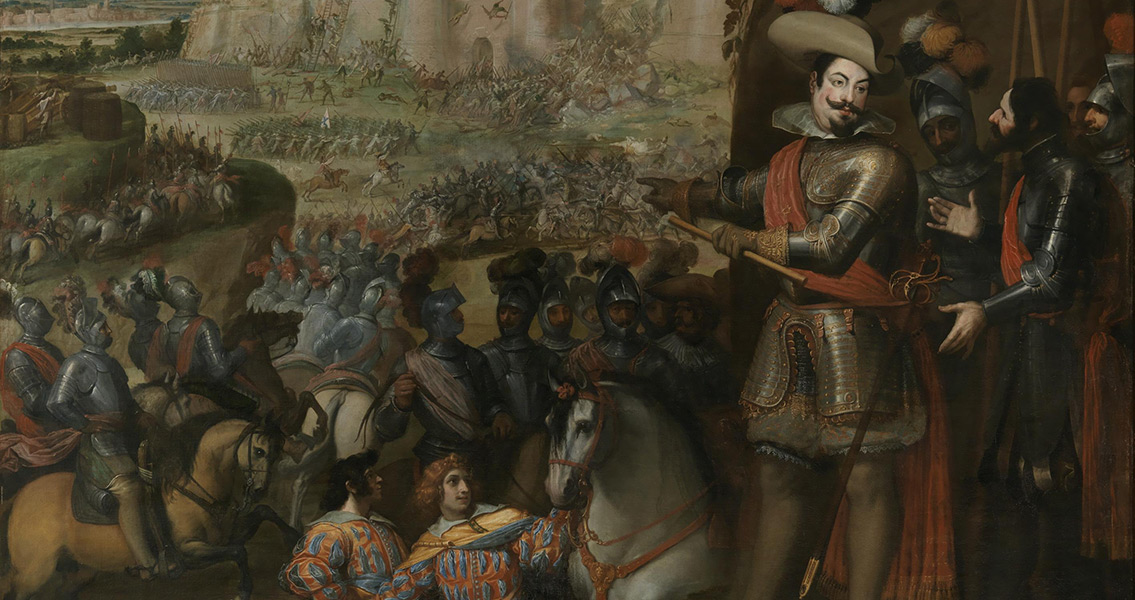<![CDATA[The map and balance of power of Europe was changed irrevocably on 24th October 1648, with the signing of the Treaty of Westphalia. It brought an end to the Thirty Years War, a three decade long series of conflicts on the continent that had wrought a path of massive destruction and upheaval. A look at the results of the Treaty of Westphalia shows just how pivotal the Thirty Years War was in shaping modern Europe. The Netherlands gained independence from Spain, Sweden gained control of the Baltic Sea, and France rose to be the prominent power in Western Europe, a position it would hold for centuries. Just as significantly, the power of the Holy Roman Empire had been shattered. An institution that had dominated central Europe for centuries was rendered powerless, and in its wake German states started to gain greater freedom and autonomy. The causes of the war which came to directly or indirectly embroil all of the great powers in Europe are of course complicated, and had been brewing for years before fighting actually broke out. As so often in this period however, religious divisions were a crucial factor. The onset of the Reformation had split Europe, and these divisions were most pronounced in the Habsburg ruled Holy Roman Empire, with Germany divided into Protestant and Catholic camps looking for foreign aid to defend their interests. A revolt by Protestant Bohemian Peasants kick started the fighting, the rebellion against imperial authority literally seeing representatives of the Empire thrown out of windows in Prague. The heir apparent to the Holy Roman Empire, Ferdinand II was eager to reassert Catholic authority across the empire, and had the revolt crushed quickly and brutally. It was a relatively easy victory, but it kick started decades of intense fighting. Alarmed by the victories of the Holy Roman Emperor in imposing Catholicism across his domains, the Protestant powers on the continent elected to intervene. In 1625, Denmark entered the conflict, attempting but ultimately failing to gain valuable territory from Germany. Shortly after, Sweden, ruled by Gustavus Adolphus, attacked the Holy Roman Empire and secured a string of significant victories for the Protestants. In 1634, the tide of the conflict was turned back in favour of the Catholic cause when the Spanish army intervened, securing a major victory and forcing the Swedish out of southern Germany. At the time Spain was also ruled by the Habsburg family, revealing how Europe was divided along dynastic as well as religious lines. In 1635, the direction of the conflict changed once more when France intervened, declaring war on Spain and a year later the Holy Roman Empire. Through the 1630s almost all of Europe's powers were involved in the conflict, either directly fighting or indirectly supporting one side with resources. The war had evolved into something far more complex than an offshoot of the divisions of the Reformation. France was a Catholic country yet it had entered on the side of the Protestants, fearing a victory for the Habsburg ruled Holy Roman Empire and Spain would see the country surrounded. Similarly, Denmark's and Sweden's entry into the war could be seen as opportunistic attempts to win territory in Germany as much as a crusade to defend the Protestant cause. Much of the fighting took place on German soil, and the effects were devastating. Massive armies moved across the region, taking resources to support themselves and destroying others to prevent them falling into the hands of their enemies. Mercenaries made up a significant portion of the troops on both sides. Often, cities and villages were looted and burnt as the soldiers looked for anything of value as payment. By 1648 around 20 percent of the German population had been killed. Meanwhile, towns and villages were left wrecked, devastating manufacture, agriculture and trade in the region. Finally, after two crushing defeats, one for the Spanish at Rocroi in 1643, and one for Imperialists at Jankau in 1645, the Habsburgs were forced to the negotiating table. Concessions started to be made by the empire, which ultimately resulted in the Treaty of Westphalia. The idea of a Roman Catholic Empire of Europe had been brought to a dramatic end. The continent was no longer broken into religious camps, and instead a community of independent, sovereign states started to shape European history.]]>
Treaty of Westphalia Forges a New Europe
